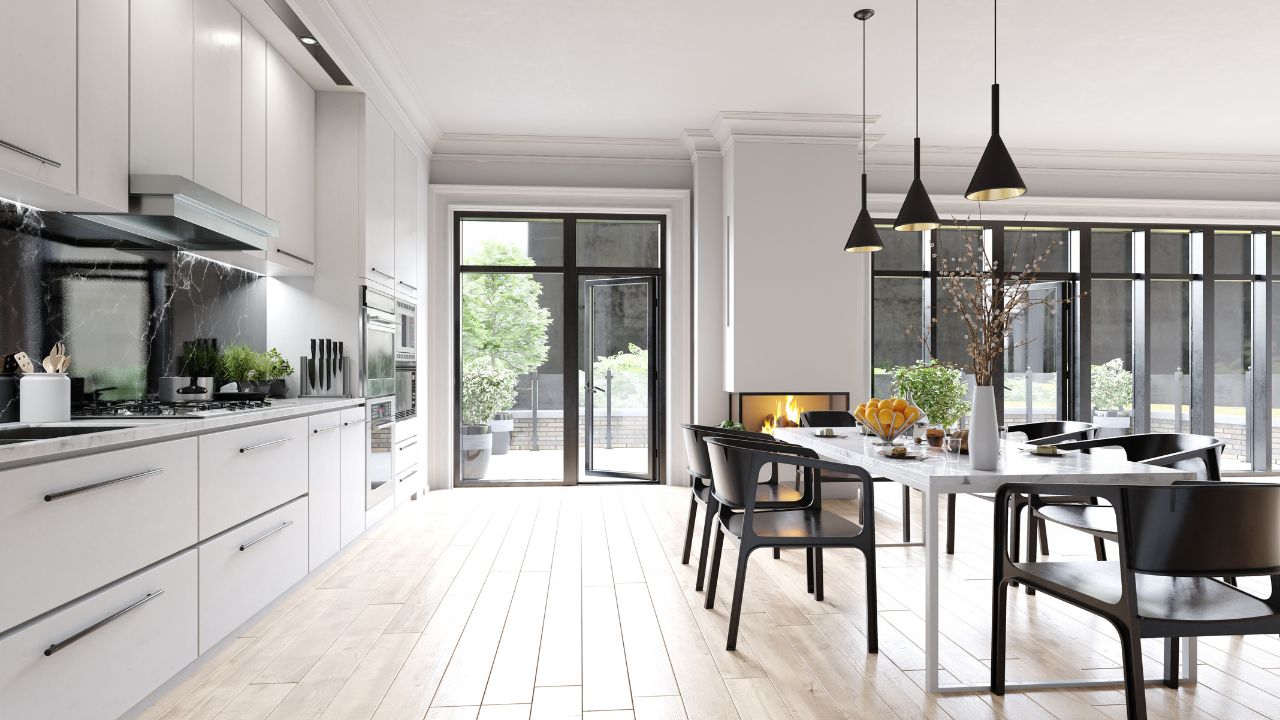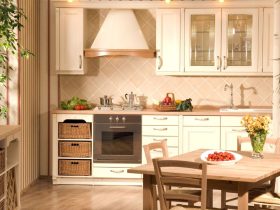A well-organised kitchen is just a part of successful organisation, as the little things also need to be properly ordered and sorted. This way, incorporating the 5 zones, you can better structure your kitchen to minimise movement and enjoy cooking and preparation more.
5 Zones in the Kitchen
A properly organised kitchen is divided into 5 zones, with essential appliances such as the refrigerator, oven, and sink arranged in a triangle. This triangle automatically makes the kitchen ergonomically designed and the paths shortest. In addition, arranging the 5 zones in a clockwise manner with supplies, accessories (pots, etc.), cleanliness (sink), preparation (worktop), and cooking (oven) makes tasks more seamless and efficient.
Organising Your Pantry
For those who can utilise an additional room as a pantry, it’s essential to organise it effectively. Frequently used foods should be placed closer to the door, while canned goods and the like can be stored further back. Food and non-food items should be stored separately.
- Systematically Fill the Pantry: Items frequently used should be within easy reach. This could be where you store your coffee tin, but also containers with cereals, tea, and coffee. Tinned goods and bottles can be stored below, with lighter items and treats in airtight containers above.
- Choose Fitting Storage Containers: Non-perishable foods like pasta, semolina, or flour can be transferred to suitable glass containers. Stackable containers are even more efficient. For convenience, you might want containers that can house two different foods, like rice and bulgur, together. This way, similar foods are stored together, saving space. 50l kitchen bin
Organising Your Kitchen
Space in the kitchen is often limited, requiring efficient organisation. Here, lightweight items should be stored up high, everyday foods in the middle, and canned goods, jars, and bottles down below.
- Maximise Space with Stackable Storage: Stackable glass containers are especially useful to efficiently store many ingredients without wasting space. Round, transparent containers are both aesthetically pleasing and functional.
- Being Organised is Half the Battle: Small containers, ready-made packs, and other ingredients can be stored together in storage boxes. This includes items like instant sauces, baking supplies, and even kitchen tools such as cookie cutters or special equipment for preserving foods.
- Optimise Space with Drawers: Consider drawer inserts, particularly for utensils. However, these drawers can also store cooking ingredients. Another handy storage option is a small shelf with drawers which can be filled with frequently used sauces, seasonings, and kitchen tools.
- Organising Herbs and Spices: The trend is moving towards fresh herbs and spices. However, since they aren’t always available year-round, having a stock of dried spices is essential. A rotating spice rack keeps common spices like salt, pepper, and chilli easily accessible. Similarly, stylish spice containers can also be filled with oil and vinegar, letting you impress your guests with your organisation.
Kitchen Organisation Summary:
- Systematically Fill the Pantry: Store frequently used foods within easy reach. Separate food and non-food items.
- Choose Fitting Storage Containers: Use different sizes/heights to store foods efficiently.
- Maximise Space with Stackable Storage: Use transparent glass containers for more space and clarity in kitchen cupboards.
- Being Organised is Half the Battle: Use storage boxes for ingredients and kitchen tools.
- Optimise Space with Drawers: Use drawer inserts and shelves for utensils and cooking tools.
- Organising Herbs and Spices: Use a rotating spice rack for convenience in cooking and preparation.













Leave a Reply